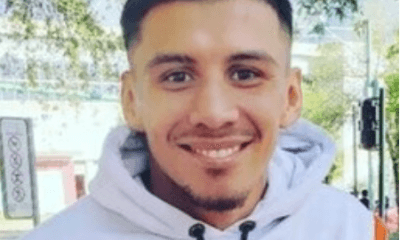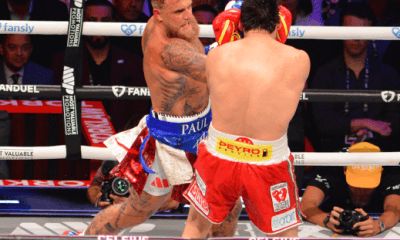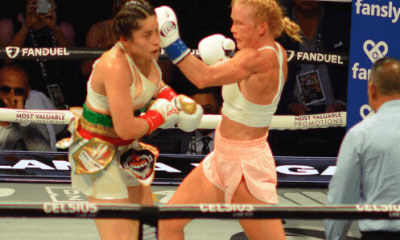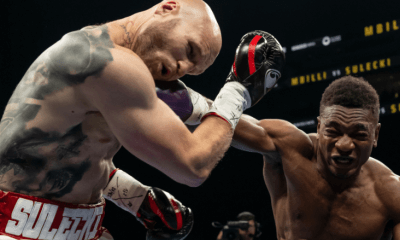Featured Articles
Avila Perspective, Chap. 134: Mexico vs World

Avila Perspective, Chap. 134: Mexico vs World
A couple of Mexican champions lead the way to the Texas fight card as Saul “Canelo” Alvarez seeks to gather another world title and mini-bomber Elwin “La Pulga” Soto defends his title this weekend.
Canelo (55-1-2, 37 KOs) holds the WBC and WBA super middleweight belts and wants the WBO belt that Billy Joe Saunders (30-0, 14 KOs) holds. They meet Saturday, May 8, at AT&T Stadium in Arlington, Texas. DAZN will stream the Matchroom Boxing card.
It’s not an easy fight, especially when you consider Saunders is a speedy southpaw who can easily run for 12 rounds. For those with good memories, another southpaw runner named Erislandy Lara gave a preview of that back in 2014. That fight bored most of the boxing world to tears. Let’s hope this one is better.
Fight fans want to see blows exchanged. Few want to see someone scurry around the boxing ring with nary a blow exchanged. It’s the primary reason people like brawls or prefer to watch people fight in the stands over spilt beer.
Canelo longs to establish himself as one of the greats in boxing and knows that by unifying the super middleweight division he can stamp his name in the history books. Only one other super middleweight did it. And he was a Brit.
Chasing Calzaghe
Joe Calzaghe was his name and to be more accurate he was Welsh. The “Italian Dragon” fought from 1993 to 2008 and ended his career with a flourish.
Calzaghe’s last three fights were against Mikkel Kessler, Bernard Hopkins and Roy Jones Jr. Though he was floored by both Jones and Hopkins in the first round he rallied to win by decisions in the U.S., not in the United Kingdom. Quite a feat.
It’s never easy to fight another world champion so when Calzaghe fought Hopkins in Las Vegas back in April 2008, many Americans expected the Philly fighter to be too much for the Welshman. It was a rugged scrap as Hopkins manhandled Calzaghe early in the fight before adjustments were made and the Welshman simply out-hustled the defensive-minded Hopkins.
Calzaghe won by split decision in a razor close fight. He fought one more time against Jones and had a much easier time in defeating the former undisputed light heavyweight titlist. He simply retired with little fanfare from those here in the US, but the Welshman was a tough, tough customer with speed, footwork and a solid chin. One more thing: he was a southpaw.
When Canelo faces Saunders he’s fighting someone who somewhat resembles the physical elements of Calzaghe. One thing about Calzaghe, he never ran. He simply stood right in front of his foe and out-punched them.
Should Canelo win, he has a firm date against IBF super middleweight titlist Caleb Plant of Las Vegas in September.
“We have always been open about what our short- and long-term plans have been. I want to unify the 168lb division, and Caleb Plant would be next in line to secure that short term goal if successful against Billy Joe Saunders,” said Alvarez.
Mini-bomber from Mexicali
WBO light flyweight titlist Elwin Soto (18-1, 12 KOs) defends against Japan’s Katsunari Takayama (32-8, 12 KOs) who is moving up from minimumweight where he was the world titlist.
Soto, 24, hails from Mexicali, the border town east of Tijuana, and has fought on American soil four times. The Mexican champion known as “La Pulga” has a kamikaze style of fighting. He’s not keen on looking stylish unless you mean his hair style.
Ironically, the Mexican kamikaze will be fighting Takayama who at 37 years old returns to the wars after spending four years away between 2016 and 2020. He moved up one weight division after winning the vacant WBO minimumweight title in August 2016 and did not fight again until last December.
Takayama has been in the fight game for a while and actually fought Roman “Chocolatito” Gonzalez for the minimumweight world title back in 2009 when the great Nicaraguan fighter campaigned at that weight class. That’s quite a few years ago.
Takayama has been fighting 20 years professionally. That’s a lot of wear and tear. But against Soto the former minimumweight world champion should not worry about a boxing match, he just has to be wary of those bombs coming his way.
Dignity. Always Dignity.
This is a favorite movie line that my spouse and I like to repeat. It was uttered by dancer/actor Gene Kelly in the motion picture Singing in the Rain.
Premier Boxing Champions presents its second of three boxing cards at the Dignity Health Sports Park on Saturday May 15, when WBC super bantamweight titlist Luis Nery defends against Brandon Figueroa.
Tijuana’s Nery has always been recognized as loaded with talent and also with too many tacos. He failed to make weight a few times as a bantamweight and now campaigns at super bantamweight. It’s one of the most talented divisions in prizefighting.
“I have a lot of respect for Brandon, but inside the ring, I am going to be the rudest person he’s ever met. Respect goes out of the window inside that ring. I am going to do everything to get the win,” said Nery.
Figueroa, 24, holds some version of the WBA super bantamweight title. Another fighter on this card, Danny Roman, held the original version that he won back in 2017 and then took the IBF version in 2019. He recently lost both belts, losing a split decision to Murodjon Akhmadaliev in January 2020.
The 122-pounders will be on display and its going to be a crackling affair.
Tickets are available now for the PBC fight card that takes place at Dignity Health Sports Park in Carson, Calif. Those outside of the area can watch on Showtime.
Fights to Watch
Fri. Telemundo 11:30 p.m. George Acosta (11-1) vs Gadwin Rosa (11-1).
Sat. DAZN 5 p.m. Saul Alvarez (55-1-2) vs Billy Joe Saunders (30-0); Elwin Soto (18-1) vs Katsunari Takayama (32-8); Kieron Conway (16-1-1) vs Souleymane Cissokho (12-0).
Check out more boxing news on video at the Boxing Channel
To comment on this story in the Fight Forum CLICK HERE
-
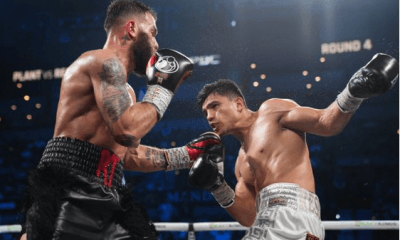
 Featured Articles4 weeks ago
Featured Articles4 weeks agoA Night of Mismatches Turns Topsy-Turvy at Mandalay Bay; Resendiz Shocks Plant
-

 Featured Articles2 weeks ago
Featured Articles2 weeks agoAvila Perspective, Chap. 330: Matchroom in New York plus the Latest on Canelo-Crawford
-

 Featured Articles1 week ago
Featured Articles1 week agoVito Mielnicki Jr Whitewashes Kamil Gardzielik Before the Home Folks in Newark
-
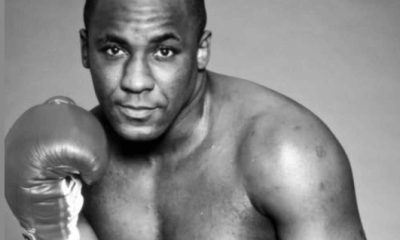
 Featured Articles4 weeks ago
Featured Articles4 weeks agoRemembering the Under-Appreciated “Body Snatcher” Mike McCallum, a Consummate Pro
-

 Featured Articles4 weeks ago
Featured Articles4 weeks agoAvila Perspective, Chap 329: Pacquiao is Back, Fabio in England and More
-

 Featured Articles3 weeks ago
Featured Articles3 weeks agoOpetaia and Nakatani Crush Overmatched Foes, Capping Off a Wild Boxing Weekend
-

 Featured Articles3 weeks ago
Featured Articles3 weeks agoFabio Wardley Comes from Behind to KO Justis Huni
-

 Featured Articles2 weeks ago
Featured Articles2 weeks agoCatching Up with Clay Moyle Who Talks About His Massive Collection of Boxing Books

